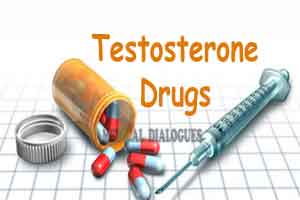- Home
- Editorial
- News
- Practice Guidelines
- Anesthesiology Guidelines
- Cancer Guidelines
- Cardiac Sciences Guidelines
- Critical Care Guidelines
- Dentistry Guidelines
- Dermatology Guidelines
- Diabetes and Endo Guidelines
- Diagnostics Guidelines
- ENT Guidelines
- Featured Practice Guidelines
- Gastroenterology Guidelines
- Geriatrics Guidelines
- Medicine Guidelines
- Nephrology Guidelines
- Neurosciences Guidelines
- Obs and Gynae Guidelines
- Ophthalmology Guidelines
- Orthopaedics Guidelines
- Paediatrics Guidelines
- Psychiatry Guidelines
- Pulmonology Guidelines
- Radiology Guidelines
- Surgery Guidelines
- Urology Guidelines
Use of testosterone therapy for women: Global Consensus Position Statement

An international task force of experts from leading medical societies brought together by the International Menopause Society has produced the first Global Position Statement on the use of testosterone in the treatment of women.
The statement was published in four leading international medical journals and endorsed by 11 internationally esteemed medical societies.
The statement provides clear guidance regarding the prescribing and measurement of testosterone for female testosterone therapy as well as advice on testosterone prescribing practices that have the potential to be ineffectual or cause harm.
It follows years of debate regarding testosterone therapy for women and, for the first time, provides agreement among experts and medical societies about how testosterone could be prescribed for women.
Hypoactive Sexual Desire Dysfunction (HSDD) is thought to affect around 32 per cent of women at midlife; and, while it's common for women to lose interest in sex around the time of the menopause and after, the use of testosterone as a treatment offers women an approach that may significantly improve their sexual and related emotional wellbeing.
Key Messages:
- The only evidence-based indication for testosterone therapy for women is for the treatment of HSDD, with available data supporting a moderate therapeutic effect.
- There are insufficient data to support the use of testosterone for the treatment of any other symptom or clinical condition, or for disease prevention.
- Meta-analyses of the available data show no severe adverse events during physiological testosterone use, with the caveat that women at high cardiometabolic risk were excluded from study populations.
- The safety of long-term testosterone therapy has not been established.
- It was considered of utmost importance that the diagnosis of HSDD involves a full clinical assessment and that other factors contributing to FSD must be identified and addressed before testosterone therapy is initiated
- A blood total testosterone level should not be used to diagnose HSDD.
- Treatment should only be with formulations that achieve blood concentrations of testosterone that approximate premenopausal physiological concentrations.
- Because no approved female product is presently approved by a national regulatory body, male formulations can be judiciously used in female doses and blood testosterone concentrations must be monitored regularly.
- The panel recommended against the use of compounded testosterone.
"This position statement has far-reaching global consequences. It not only reassures clinicians that a trial of testosterone therapy is appropriate for women with Hypoactive Sexual Desire Dysfunction (HSDD), but very emphatically states that, at present, the available evidence does not support the use of testosterone for any other symptoms or medical condition," said co-author Susan Ruth Davis, Monash University in Melbourne, Australia. "It also clearly advises that when testosterone therapy is given, the resultant blood levels should not be above those seen in healthy young women. We hope this will allow women who may benefit to be offered treatment and simultaneously protect women from receiving inappropriate testosterone therapy."
They concluded that testosterone can be effective at improving sexual wellbeing for postmenopausal women with HSDD. Recognized benefits included improved sexual desire, arousal, orgasm and pleasure, together with reduced concerns and distress about sex.
The statement was developed by a multinational, multidisciplinary task force, the members of which were delegates from leading medical societies, and was peer-reviewed by expert committees of endorsing societies from across the world. It has been translated into 13 languages and aims to improve the sexual wellbeing of women on a global scale.

Disclaimer: This site is primarily intended for healthcare professionals. Any content/information on this website does not replace the advice of medical and/or health professionals and should not be construed as medical/diagnostic advice/endorsement or prescription. Use of this site is subject to our terms of use, privacy policy, advertisement policy. © 2020 Minerva Medical Treatment Pvt Ltd